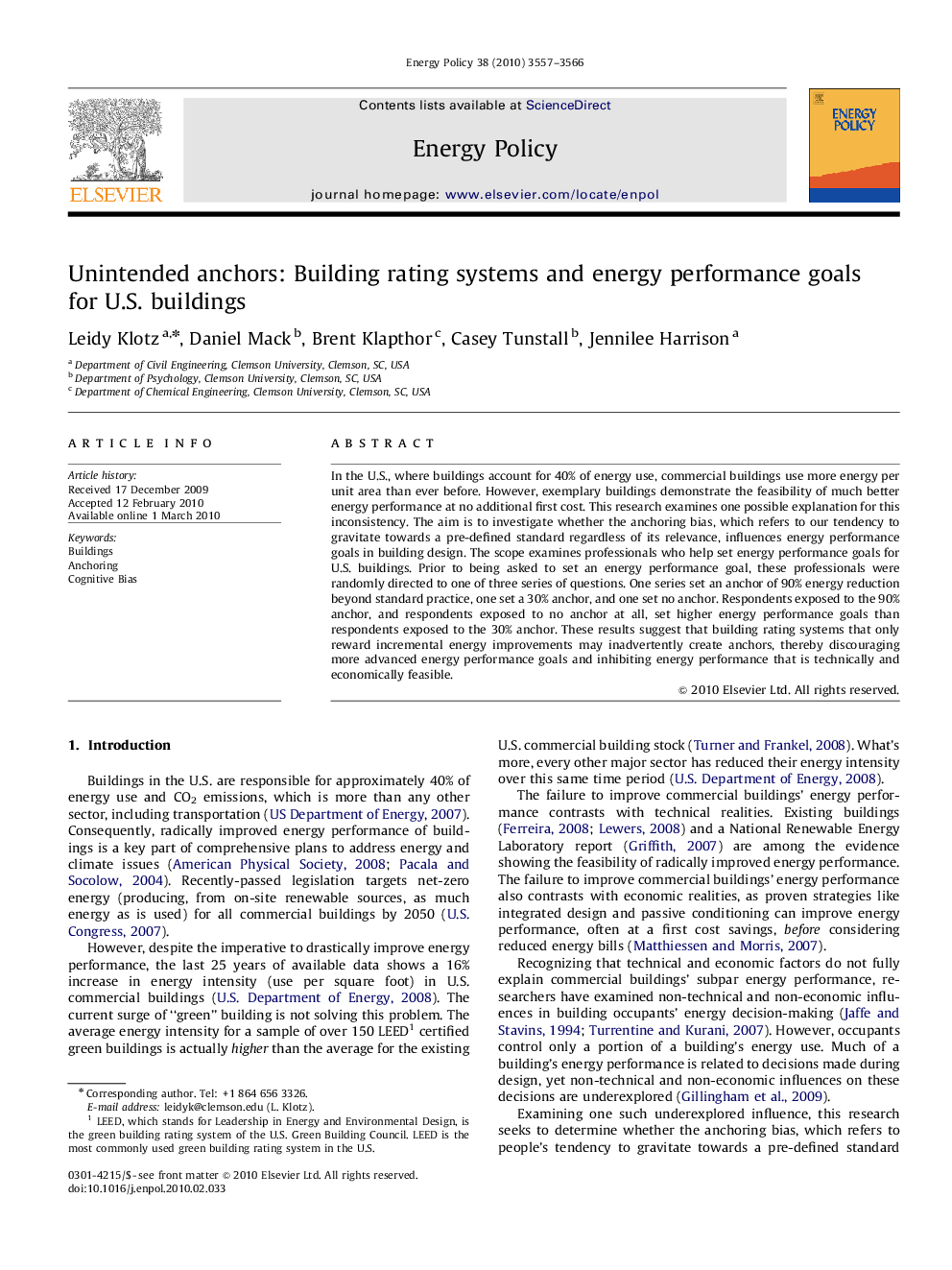| کد مقاله | کد نشریه | سال انتشار | مقاله انگلیسی | نسخه تمام متن |
|---|---|---|---|---|
| 993311 | 936030 | 2010 | 10 صفحه PDF | دانلود رایگان |

In the U.S., where buildings account for 40% of energy use, commercial buildings use more energy per unit area than ever before. However, exemplary buildings demonstrate the feasibility of much better energy performance at no additional first cost. This research examines one possible explanation for this inconsistency. The aim is to investigate whether the anchoring bias, which refers to our tendency to gravitate towards a pre-defined standard regardless of its relevance, influences energy performance goals in building design. The scope examines professionals who help set energy performance goals for U.S. buildings. Prior to being asked to set an energy performance goal, these professionals were randomly directed to one of three series of questions. One series set an anchor of 90% energy reduction beyond standard practice, one set a 30% anchor, and one set no anchor. Respondents exposed to the 90% anchor, and respondents exposed to no anchor at all, set higher energy performance goals than respondents exposed to the 30% anchor. These results suggest that building rating systems that only reward incremental energy improvements may inadvertently create anchors, thereby discouraging more advanced energy performance goals and inhibiting energy performance that is technically and economically feasible.
Journal: Energy Policy - Volume 38, Issue 7, July 2010, Pages 3557–3566